This site uses only a few technical cookies necessary for its operation. By continuing to browse, you accept their use.
To find out more...
To find out more...
Choosing a chopping board
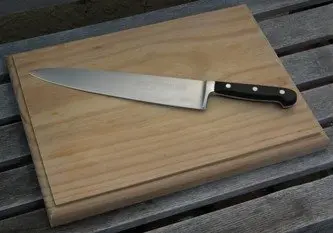
It's a no-brainer, surely? If you want a chopping board, just find a piece of wood, and Bob's your uncle! You can happily chop away with a knife and not damage the table or worktop. But in reality, it's a bit more complicated than that. You need to be careful what you are buying, in particular the material that the board is made from.
50 K 4.6/5 (20 reviews)
Keywords for this post:UtensilChoiceCutting materialKnifeLast modified on: May 8th 2012
Choosing a chopping board
Glass or metal:
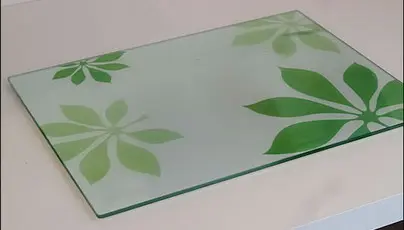
You will sometimes see chopping boards made from these materials, generally decorated with an embedded photo or graphic design. It's very simple: just don't buy them! Both materials will blunt your knife very rapidly.
A chopping board should be made of reasonably soft material.
Wood
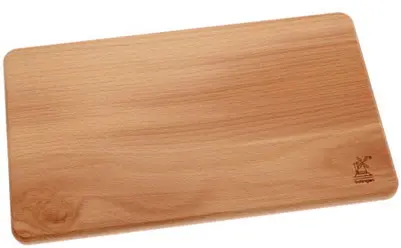
Hmm... It's tempting to go back to natural materials with an old-fashioned chopping board, like those that have been used since medieval times.

This is an appealing idea, but wooden chopping boards have two problems: the knife cuts into the wood easily, so you end up with a certain amount of “sawdust” in the food you are cutting, and wood is porous, so it can hold smells or flavours, even if it is cleaned very thoroughly (this is pretty disastrous if you cut garlic on it, then follow that with pastry for a dessert, for example – just imagine the mix of flavours…).
A chopping board should be resistant to knife cuts.
Synthetic material
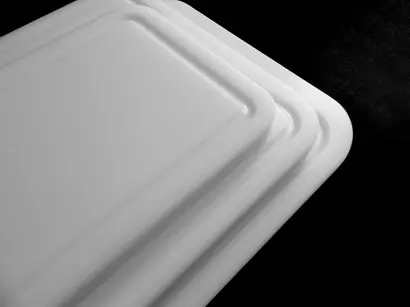
This is without doubt the ideal solution: flexible enough to protect the knife edge, robust enough not to be damaged too quickly. It is easy to clean and does not tend to hold flavours or smells.
The synthetic materials fall into two main groups: high-density polyethylene or HDPE, and polyvinyl chloride or PVC. HDPE is more expensive than PVC, but much more resilient and more neutral, so better for our health.
Most of the cheaper chopping boards on sale in the shops are in PVC and these present much the same problem as wooden ones: they are easily damaged by the knife, so you will soon end up with bits of PVC in your food. It is better to be careful and replace any PVC board which shows too many knife marks.
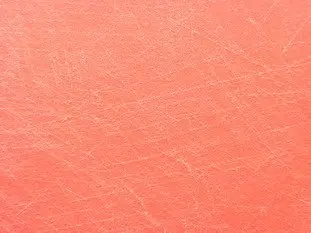
When it comes to the size, it's quite simple: the bigger the better (as long you can find a place to store it in your kitchen, of course). A board about 30 x 30 cm (12 x 12 inches) and 1 cm (½ inch thick) is a good compromise. A large board is comfortable to use as you can cut things easily and push them to the side as you go. This is more awkward with a small board.
If you buy a board in HDPE from a professional cookware shop (expensive, but the quality will be good), you will have a choice of both size and colour, as restaurant kitchens use different boards for meat, vegetables, fish, etc. and these are colour coded (red = meat, green = vegetables, etc.).
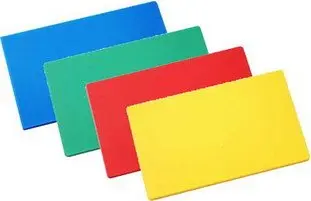
To sum up: For your own kitchen, invest in a board in HDPE about 20 x 30 cm (8 x 12 inches).
Lasts posts
Butter vs. grease
We often read in a recipe where a pastry is put into a mould that, just before pouring, the mould should be buttered or greased. But what's the difference between these 2 terms?December 1st 20259785
Getting out of the fridge early
Very often when you're cooking, you need to take food or preparations out of the fridge, to use them in the recipe in progress. There's nothing tricky about this: you just take them out of the fridge and use them, usually immediately, in the recipe. But is this really a good method?November 24th 20251,1125
Who's making the croissants?
When you look at a bakery from the outside, you naturally think that in the bakery, the bakers make the bread, and in the laboratory, the pastry chefs make the cakes. It's very often like that, with each of these professions having quite different ways of working, but sometimes there's also one...November 23th 20251,003
Oven height
When we put a dish or cake in the oven, we naturally tend to put it on the middle shelf, and that's what we usually do. But in some cases, this position and height can be a little tricky, so let's find out why.October 8th 20252,7405
The importance of sieving
In recipes that use a fine powder (flour, powdered sugar, etc.), you'll often see the advice to sift before using it. To sift is to pass the powder in question through a sieve (a very fine strainer) before incorporating it into your recipe. It's often advice, but is it really useful?September 3rd 20257,5293
Other pages you may also like
Should a sausage be pricked before cooking?
If you are using sausages in a recipe, you may have already asked yourself the question: Should you prick it before cooking it, or not? You will certainly find as many opinions "you should prick" as "you should not". Let's try to untangle all this.September 29th 201848 K4.1
No need to boil gelatin
Gelatin is a magical ingredient for making light, creamy, structured desserts, yet it's often misused in the kitchen. A common mistake in some recipes is the idea that it needs to be boiled for it to work properly, but this is a mistake indeed: gelatin melts at a much lower temperature, around...November 21th 20248,2715
The 3 essential knives
You must have heard a chef or cook say: "There’s no good cooking without good ingredients". This is very true, of course, but for any amateur or beginner it is equipment that really counts to start with. What I mean is that you should not skimp on kitchen equipment, good utensils, a food...May 30th 201825 K5
Cleaning endives
If you buy your endives elsewhere than in supermarkets, and in this case the best is of course from a market gardener, he or she is the one who planted and harvested them, in this case you will have endives full of earth or sand, depending on where they were grown, which is normal and reassuring, we...March 24th 202026 K4.6
The return of the "Norman hole"
You maybe know the "trou normand", this old gastronomic custom typically French which consists in taking a (small) glass of calvados, generally between the last course and the dessert? It's something that seems a bit anachronistic nowadays, having a glass of an alcohol of more than 60° in the...December 18th 202115 K4.8
Post a comment or question
Follow this page
If you are interested in this page, you can "follow" it, by entering your email address here. You will then receive a notification immediately each time the page is modified or a new comment is added. Please note that you will need to confirm this following.
Note: We'll never share your e-mail address with anyone else.
Alternatively: you can subscribe to the mailing list of cooling-ez.com , you will receive a e-mail for each new recipe published on the site.









